The analysis of the blood on the parasites — the procedure compulsory for all those who work in the field of health care, educational institutions, with animals, or intends to participate in education. To the difference of the search of cala modern, blood tests on worms provide the most accurate results, give the possibility to evaluate the degree of invasion and to monitor the effectiveness of the treatment. Are carried out surveys of this type quickly and do not require much time to decipher.
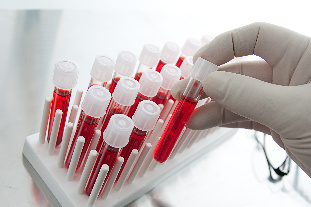
When and who need to have blood tests on helminth infections?
A sad medical statistics shows that almost every 3 man the problem helminths is today. Transport aircraft, offices, and educational institutions, without washing the vegetables and fruits, hand-shaking, all these usual for each adult and child in the case and become the main source of contamination by parasites. Even if symptoms do not immediately appear, in all cases, the parasites have a very negative impact on the human body: cause the deterioration of the appetite, promote the development of allergies, aches corrupt authority, poor digestion, sometimes capable of causing death. Given this, you need to pass on the parasites of the analyses for each person (preferably every year).
You can't delay the investigation, if they manifest themselves are specific to the helminth infection symptoms:
- long live the weight loss;
- urticaria;
- frequent nausea;
- the disgust of food;
- the strong decrease of the hemoglobin;
- irritability, or insomnia in children.
In addition, you can call a group of people who necessarily every 6 to 8 months are required to verify the blood. Thus, in particular, are:
- people living in areas with frequent outbreaks helminth infection;
- those who work in educational institutions and have to deal with young children;
- officers of health;
- all the professionals of the restoration.
- people working with animals, as well as their family members (veterinarians, workers in meat processing plants, the shepherds, the farmers, the employees of the circus and the zoo, etc).
In addition, the analysis of the blood on the worms of the earth must pass all the children in preschool and school-age, which must soon attend an educational institution, cups. Explore the blood on the parasites must be pregnant, the children on the eve of the immunization. In addition, analysis is giving after you have gone through the treatment of parasites.
ELISA as one of the most effective methods of diagnosis
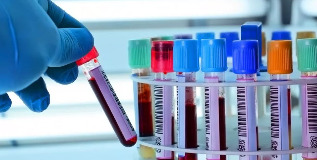
The most popular and authentic of the analysis to today, the experts call enzyme-linked immunosorbent assay of blood on the parasites. The main objective of the precision of the laboratory method is to detect in the blood of antibodies to the one or the other type of parasites. Immunoglobulins of the same (and are also known as antibodies) are a natural response of the immune system, and is intended to neutralize the negative of the agent.
An accurate diagnosis, and to determine the intensity of going on the disease of parasites, how long it lasts, the professional succeeds with the help of 3 different types of immunoglobulins:
- Class A. Detected in the blood of the child or the adult is about 2 to 4 weeks, with the time of infection. Nearly 80% of them appear in mucous membranes and only 20% remains in the blood. After the treatment of immunoglobulins of class A may be present not more than a month. If the resumption of the analysis of the parasites of new detects, this means that the disease is passed to a chronic form.
- The M-class is the fastest to react to the presence of a parasite. In the blood may be discovered on 5 days with the time of infection. However, for a long time, they are not held up to 2 months, and then gradually appear. Thanks to this indicator, the doctor can make a conclusion on the presence of acute helminthiasis at a specific time.
- Class G. Appear relatively later, 1 month after the worm infestation. However, they appear no longer than six months. They are used to understand how long a person suffers from helminthiasis.
Compared to other laboratory methods, ELISA has a number of advantages, in particular:
- high precision;
- the ability to determine the stage of the disease;
- the versatility;
- the possibility of use for the screening of the population;
- fits the adult and the child.
Enzyme-linked immunosorbent assay should be used to identify these types of helminth infection, such as:
- giardiasis;
- trichinosis;
- leishmaniasis;
- ascariasis;
- cysticercosis;
- opisthorchiasis;
- echinococcosis and others.
Gemo analysis for the detection of the parasite
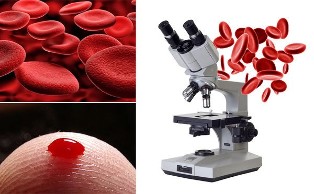
Gemo analysis — one of the most modern analysis on the parasites in children and adults. With its help unable to identify the following:
- a specific aspect of the parasite;
- the structure and the number of leukocytes;
- the number of red blood cells;
- the degree of viscosity of the blood;
- the state of the immune system;
- the presence of fungi and viruses.
Unlike the ELISA, gemo analysis provides for the closing of only a few drops of blood from your finger. The sterile liquid is placed on the glass, then carefully viewed under the microscope. The number of increments reaches 1800-2000 times. You really have no additional treatment (use of enzymes, dyes, drainage, etc). In modern hospitals, the picture appears on the monitor, but because the patient has the opportunity to observe the process of the research, to make sure you fungi, and helminths. Shocking may be an image of a parasites larvae. If necessary, run a photo, or a video of the study.
This is the quick method, indeed, of information about his state of health, the patient may learn after 10-15 minutes.
It is to be noted that as a method of identification of parasites gemo analysis is not used. The fact that the human body can accommodate different types of parasites with different place of location. Not in all cases, the migration of the larvae in the blood. Suspect the presence of helminths allows a reduced number of red blood cells (as well as some parasites feed on blood, and nutrients), the increase in the number of white blood cells (points to the struggle of the organism with the parasite), dense plasma.
Other methods of diagnosis
If using method 1 to identify the helminths, can not, the doctor recommends laboratory studies additional:
- The serological analysis. Also refers to immunological variants, such as the ELISA test. However, unlike the latter, the first has the aim of exploring the blood and the serum. In order to obtain the information, the doctor needs to use the reaction between antibodies and antigens. The serological analysis is not done for all types of worms, but only that the doctor has a doubt. If in the body of the man is a parasite, a specialist will notice a clear reaction.
- PCR-diagnosis. Do not give the possibility of determining the evolutionary stage of worm infestation, and is not recommended during the fixing of all kinds of pests. With its help, you can find just the presence in the human body simple helminths. The main task of the laboratory in this case — the research of the DNA and RNA of the parasite. Plays no role, be a parasite, living or dead. Pass on the study, there is the possibility of any material, in particular, urine, blood or stool. For a higher accuracy of this type of analysis may give up several times.
- Vegetative resonance Test. The method is based on the detection of the resonance between the human body and medicine. As the last act recording media of different types of worms. All of the data of frequency of each type of parasites have been validated by scientists in 1989, the medically assisted procreation (as it still calls this method) does not take place under laboratory conditions and provides an opportunity to identify what is the state of the immune system of man in a specific period of time. So, with the help of medically assisted procreation, the doctor can determine it is suffering the body against allergies, there are-t-he-toxic, bacterial, parasitic effect or not.
- A detailed analysis of blood. The overvaluation or, on the contrary, downplayed the hemoglobin, reduces the number of red blood cells, increase in the number of eosinophils, are the signs that allow to suspect the presence of a parasite in the human body.
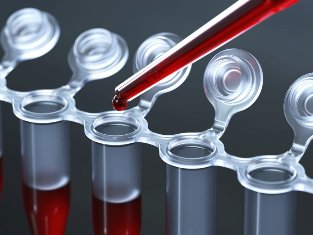
How to prepare for the study and interpretation of the results?
The deposit characteristics of the analysis directly depend on the method you should use, and the presence of a few species of parasites suspect. Generally, blood sampling is performed from the vein, and in some cases (gemo) scan of the finger. Just 10-15 ml of blood to establish the diagnosis.
In order to obtain a maximum of information, you must meet certain filing requirements of the clinical analyses:
- On the eve of the day of blood sampling, the patient should not consume too much salt, fatty foods (in fact, it can change the level of white blood cells); products that can cause allergies, honey, citrus fruit (increases in the rate of eosinophils, which also took place during the helminth infections); foods rich in essential oils — garlic, onion, ginger (which will affect the activity of parasites).
- It is better to hand over the material on an empty stomach. Animals in a small amount of clean water.
- Mandatory you must inform your doctor about medications that have been used over the past 2 weeks.
- Is not recommended a few days prior to the filing of the analyses using the procedures of physiotherapy (including chest x-rays, ULTRASOUND, x-ray).
- At least one week before blood sampling to refuse alcoholic beverages and the resources that contain a high concentration of ethyl alcohol.
- Smoking it is necessary to give up at least 2 hours before the blood test.
If a strong helminthiasis has been a speaker, an investigation is necessary and the new-born. In him, the blood is drawn from the umbilical cord or the placenta.
On the action of the research, usually enough for 2-3 days. A little more time (up to 5 days) to spend in the case, if you run a package in immunological research on the different types of parasites.
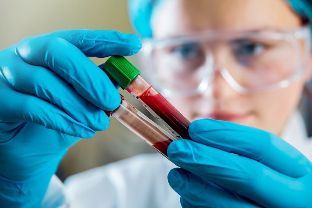
Ventilation must be only expert. The simplest interpretation remain gemo scanning, and PCR-diagnosis. Either they discover the parasite or its larvae.
The situation is complex, with a method that should be called ELISA. The doctor must take into account the immunoglobulin 3 groups. Thus, the acute form of the disease, you can tell if the emergence of the combination: immunoglobulin class M are positive, and the class A or class G may be positive or negative. On the chronic form data are: immunoglobulin class M, but class A and G may be positive or negative.
In this case, if one of the above statements analysis showed a positive result, pull with the treatment of helminthiasis is not worth it. After complete, designated by the physician of treatment is required, the furnishing of the analysis, but it should be done approximately 2-3 months after the medication. Not knowing what tests you need to be successful, it is best to consult a doctor-therapist, a gastroenterologist or other specialists.




































